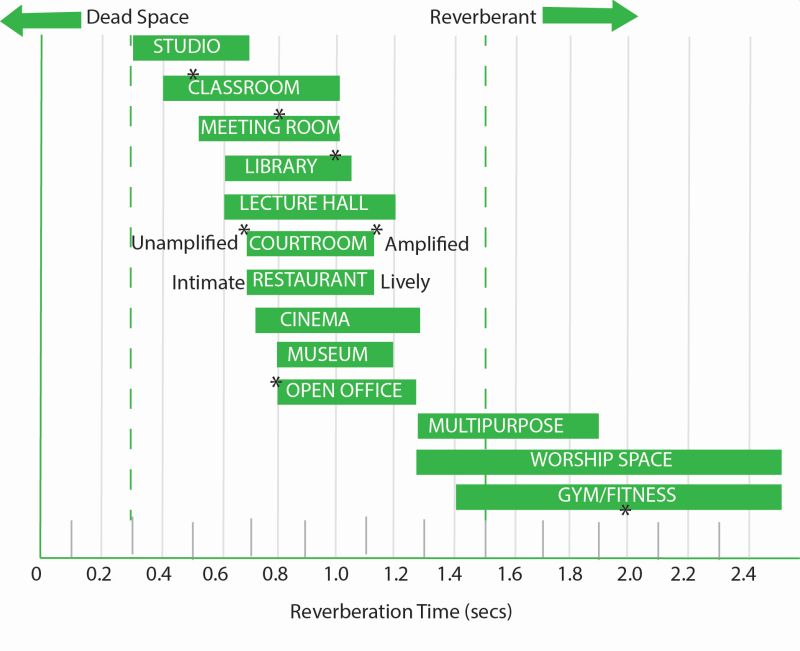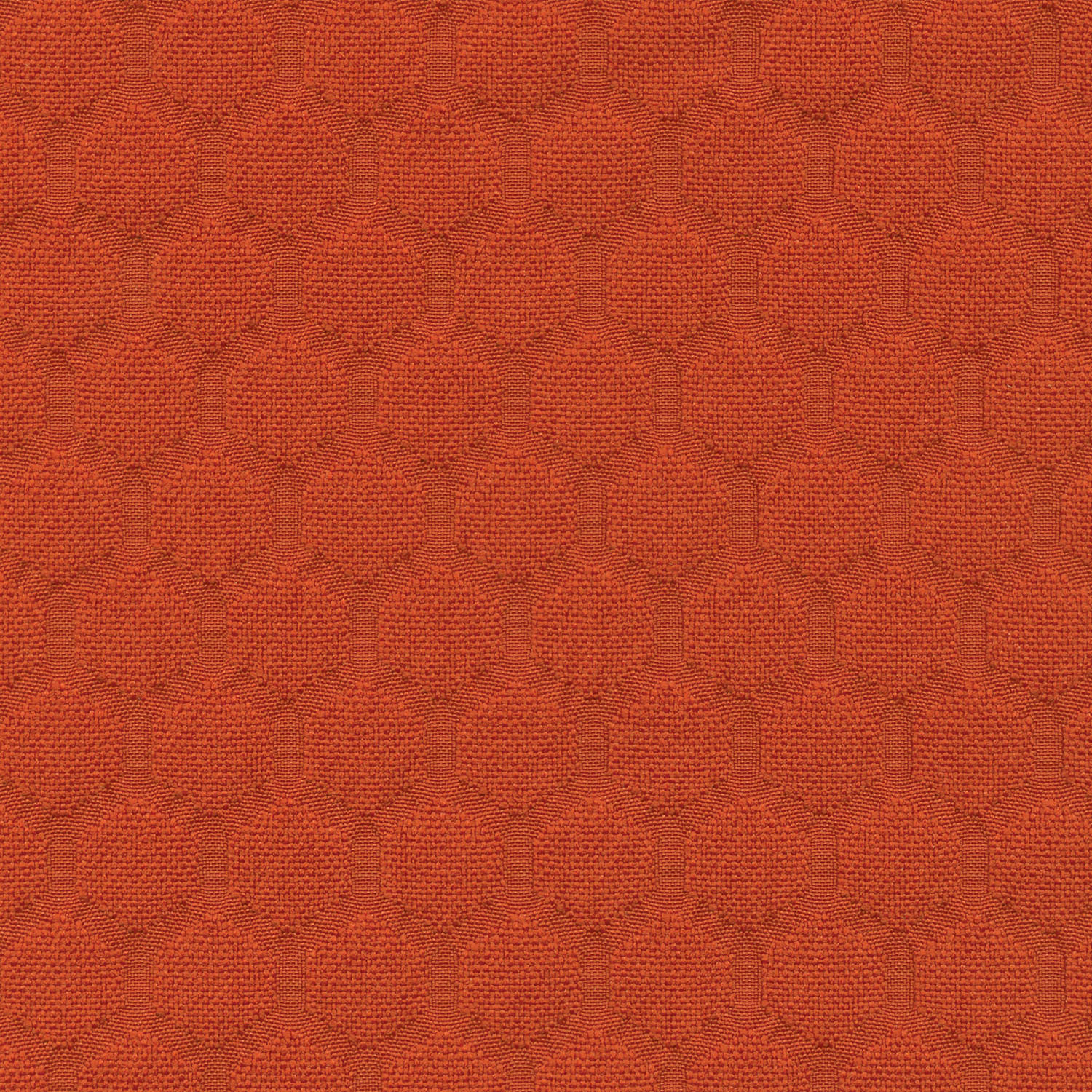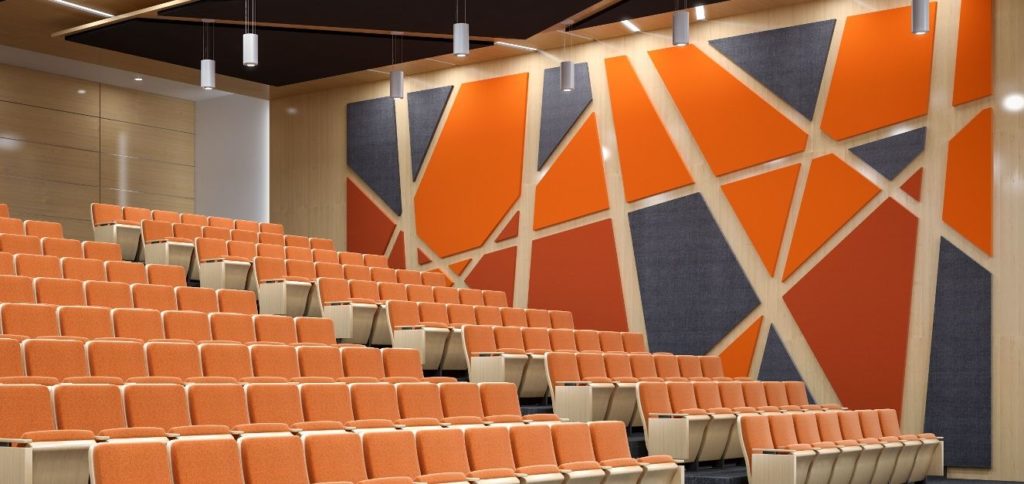
Guilford of Maine is the name of a company that has been producing acoustic fabrics for over 40 years. Guilford of Maine is the most recognized company in the acoustical fabric arena. They produce over 50 different colors and textures that are used throughout the acoustic treatment world. https://www.guilfordofmaine.com/acoustic. Guilford of Maine is well known for a quality acoustical fabric that has high air permeability ratings. With acoustical fabrics, the fabric must be woven in such a way that it allows air flow through the fabric and across the surface area of the acoustical treatment underneath the fabric. Guilford of Maine fabric covers panels that are treated with middle and high frequency absorption technologies. The reason their fabrics are so popular is due to their appearance, selection, and performance. Just as Acoustic Fields www.acousticfields.com is well known for its carbon and foam technologies, Guilford of Maine is known for its acoustical fabric performance and selection.
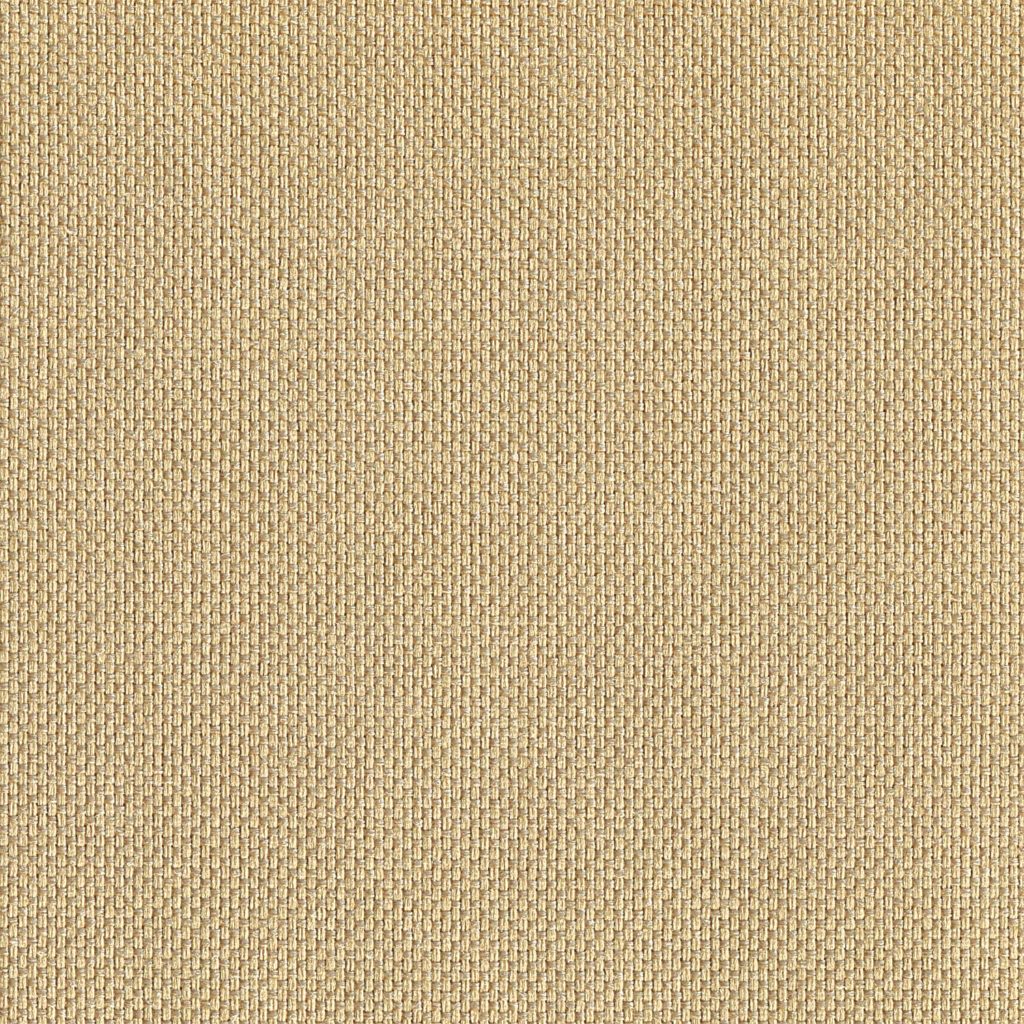
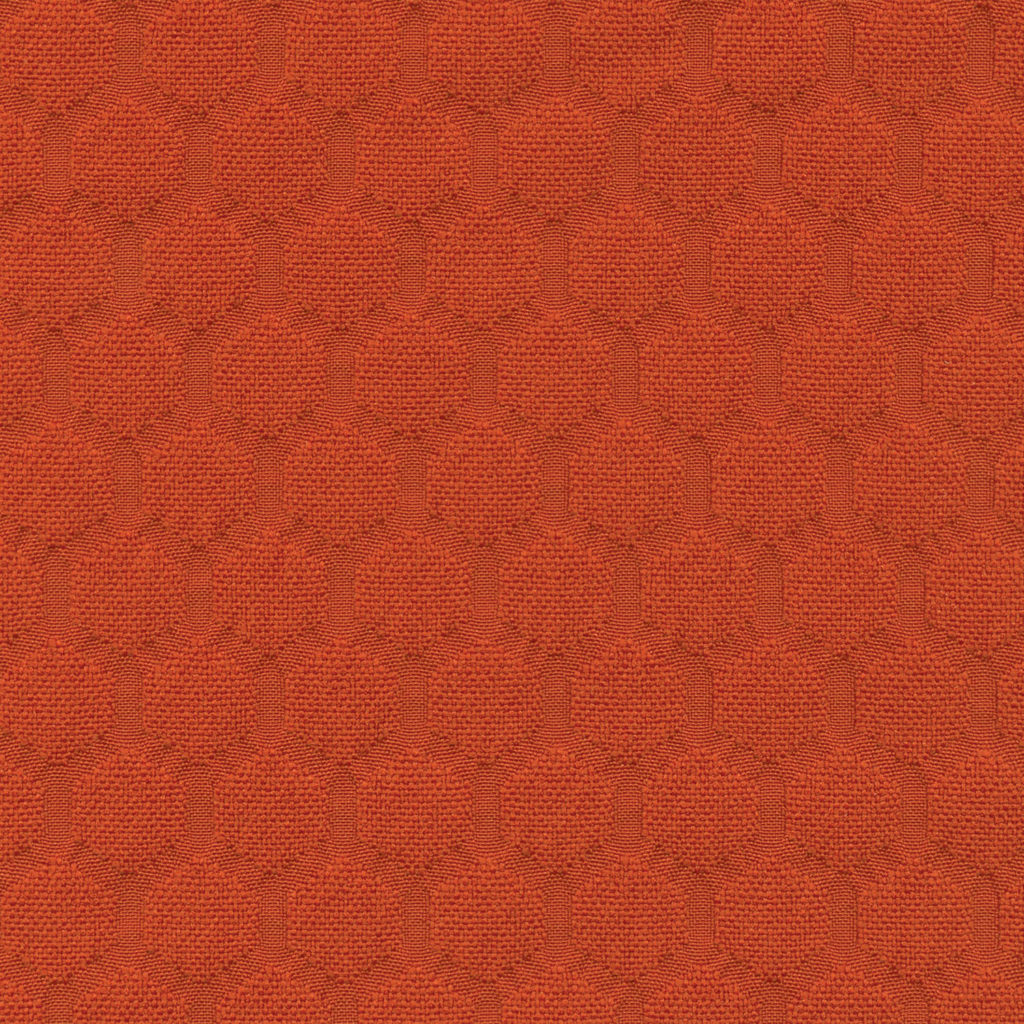
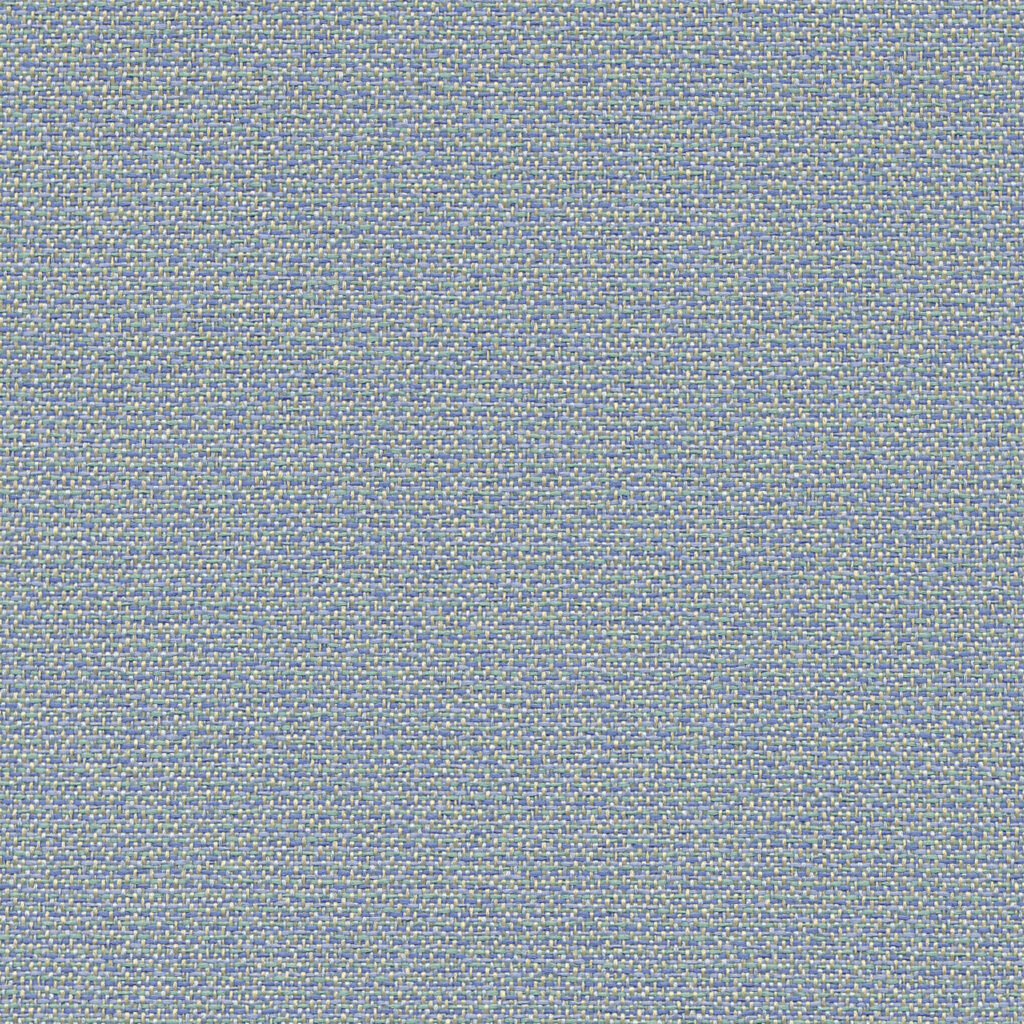
The most important function of an acoustical fabric is to allow as much air to flow through it as possible and still have a quality appearance that offers many different colors and textures to choose from to complement any design decor objective. The process of air moving through the fabric is termed air permeability. https://csbs.uni.edu/sites/default/files/Air_Permeability.pdf. The reason air permeability is so critical to the performance of the sound absorption technology is because the sound absorption process starts with air flowing across the surface of the material type. Let’s use our Studio Pro Foam as an example to illustrate this process. Air flows across the surface of our foam technology. When the air comes in contact with the foam surface area friction is produced. One of the bi – products of friction is heat. The friction produces heat which is an energy transformation. When we change energy forms, we have absorption occurring. The rate and level of the absorption process is determined by the absorption technology used in the process. Not all rates and levels of absorption are the correct ones to use for music and voice. https://www.acousticfields.com/product/acoustic-foam/
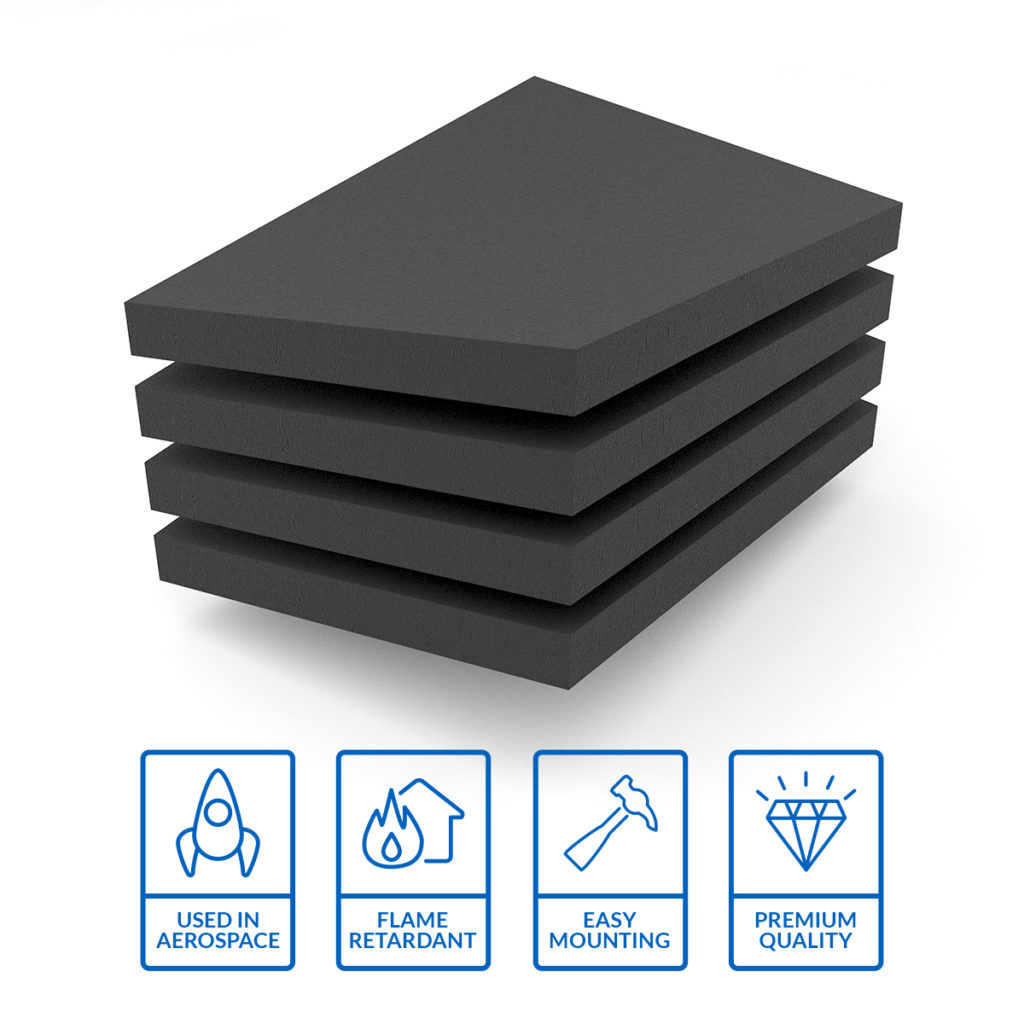
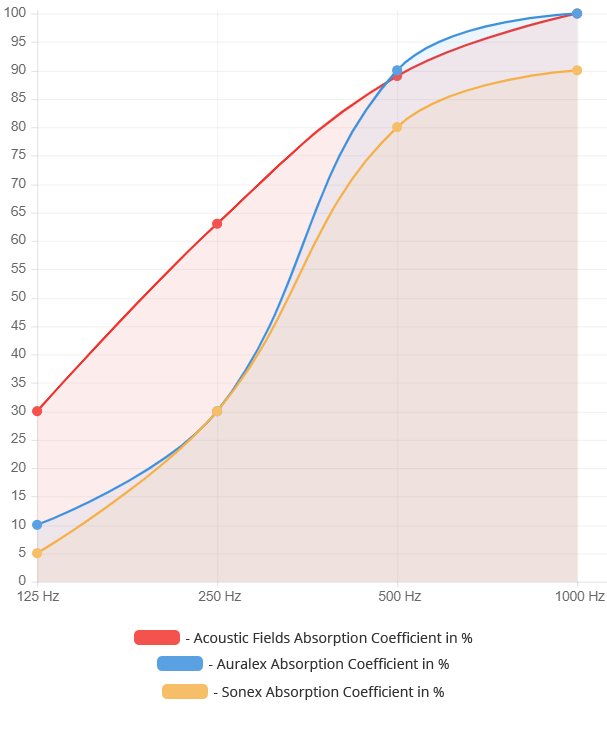
Music and voice are different from noise. Music and voice require that the rate or how fast you absorb energy at different octave bands is smooth and equally applied through all the octave bands. This process is termed linearity. The absorption rate must be as linear as possible starting at a design frequency for the product type and thickness. Our Studio pro Foam begins absorbing at 125 Hz. for a 2″ deep piece of foam and moves slowly up through 6,300 Hz. This is the frequency range that mix engineers work within. It is always advisable to treat your room within the same frequency range as the music and voice was originally mixed within. With music and voice you must absorb excess energy gradually so you avoid over absorption. When you over absorb music and voice you get a room that sounds too “dead”. The life or reverberation has been lowered too far so the vocals sound compressed and unnatural. Our Studio Pro Foam took 8 years to develop at a cost of over 2M. There simply is no finer product in the marketplace to treat middle and high frequency reflections from our room boundary surfaces. https://www.acousticfields.com/product/acoustic-panels/
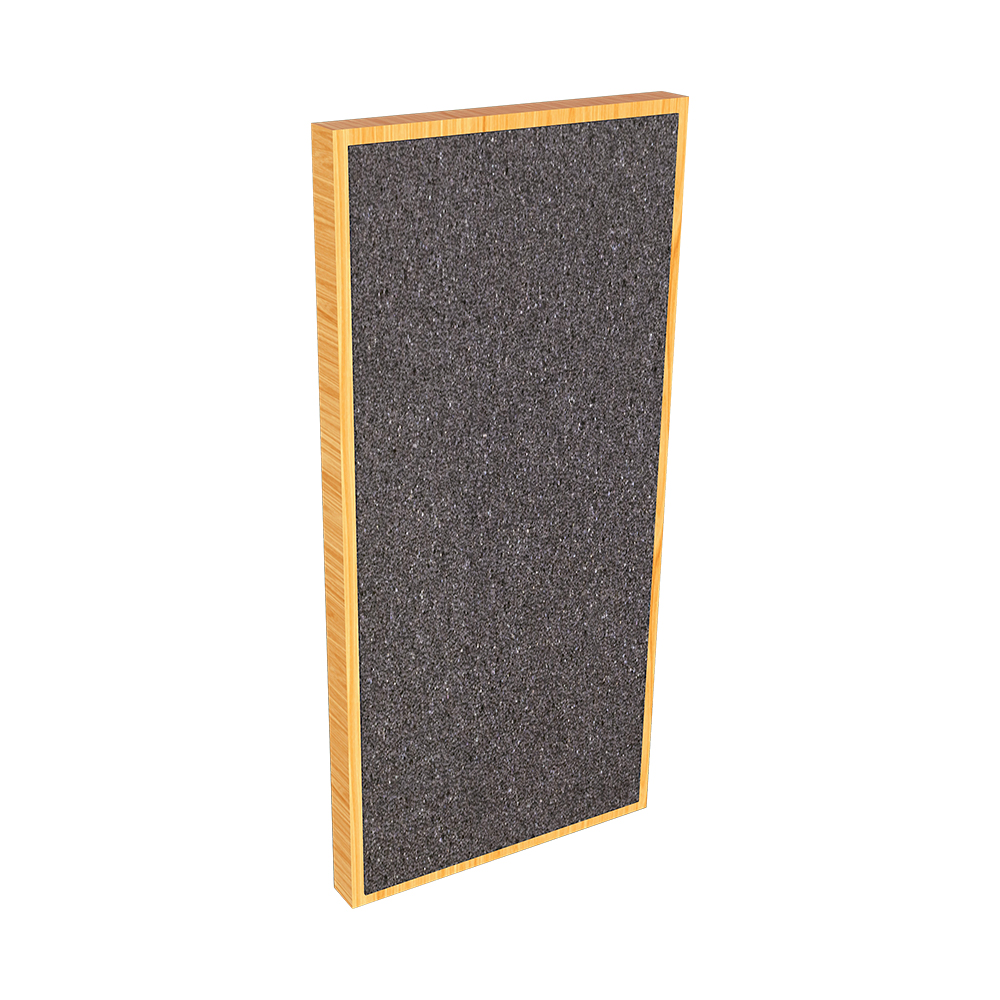
When you are deciding on what panel type to use and how many and where to place them it is best to follow the acronym TAP. TAP stands for type, amount, and position. You must first analyze the frequency and amplitude of your acoustical issues that are associated with the room usage. What you do within a room that has a certain dimensional ratio, will determine what type of acoustical issue you will be facing. Most rooms face high reverberation times. Reverberation is defined as how long a sound stays around within the room after it has been played or sung. High reverberation times are produced by the reflections from the wall surfaces. The reflections from our walls, floor, and ceiling all add up to produce what is mistakenly referred to as echo. Echo is the repeating of a sound over distance. Reverberation is the reflections from our walls and floor and ceiling all producing distortion that interferes with speech intelligibility. Speech intelligibility is defined as how many words you can clearly understand in a 10 word sentence. You must analyze the frequency and amplitude of your noise issue and then select the proper treatment type to deal with these frequencies and amplitudes and then make sure you have enough of that treatment and then make sure you place the treatment type in the proper position.
